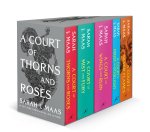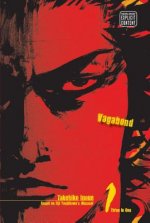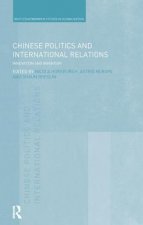
Kód: 13415803
Cellular Morphology (Band 70). A novel Process Parameter for the Cultivation of Eukaryotic Cells
Autor Thomas Wucherpfennig
In biotechnological processes the morphology of eukaryotic cells has been often recognized as being process relevant as it can be a determinant of productivity or provide information about cell age and viability. For morphological ... celý popis
- Jazyk:
 Angličtina
Angličtina - Vazba: Brožovaná
- Počet stran: 150
Nakladatelství: Cuvillier Verlag, 2013
- Více informací o knize

Mohlo by se vám také líbit
Dárkový poukaz: Radost zaručena
- Darujte poukaz v libovolné hodnotě a my se postaráme o zbytek.
- Poukaz se vztahuje na celou naši nabídku.
- Elektronický poukaz vytisknete z e-mailu a můžete ihned darovat.
- Platnost poukazu je 12 měsíců od data vystavení.
Více informací o knize Cellular Morphology (Band 70). A novel Process Parameter for the Cultivation of Eukaryotic Cells
Nákupem získáte 68 bodů
 Anotace knihy
Anotace knihy
In biotechnological processes the morphology of eukaryotic cells has been often recognized as being process relevant as it can be a determinant of productivity or provide information about cell age and viability. For morphologically very complex filamentous microorganisms, like Aspergillus niger, specific morphologic phenotypes have been revealed to correlate with maximum process performance. The complex morphology of this fungus comprises dense spherical pellets as well as viscous elongated filaments, depending on culture conditions. The exhibited morphology has tremendous effect on the overall process performance, making a precise understanding of fungal growth and morphology indispensable. Through the introduction of the versatile Morphology number (MN), this study provides the means for a desirable characterization of fungal morphology and makes it possible to quantify the interrelation between morphology, productivity and rheology in form of mathematical models. Thus, morphology as quantified by the Morphology number (MN) was demonstrated to be an important process parameter for the cultivation of A. niger SKAn 1015, because detailed morphologic information allowed the estimation of productivity and rheological properties of the cultivation broth. Moreover, fractal parameters were also found to enable a comprehensive description of fungal morphology. The presented fractal quotient (DBM/DBS) and lacunarity (?) were suitable tools for morphological characterization. A precise characterization, however, is only the first step towards a desired customization of fungal morphology. Besides micro particles, which were introduced just recently, osmolality was found in this study to be a useful parameter to adjust and customize A. niger morphology. Osmolality might provide a cheap and reliable approach to increase the productivity in industrial processes. For the commercially established process of paclitaxel production with Taxus plant cell culture, the size of plant cell aggregates has been often acknowledged as an intangible parameter, which might be responsible for general variability in plant cell culture processes. In this study a novel method of aggregate size determination via laser diffraction was introduced and found to be exceptionally eligible for industrial application, since it provides a practicable, rapid, robust and reproducible way to sample large amounts of material. The Alamar Blue assay, newly introduced for Taxus cells, was found to be exceptional eligible for viability estimation in industrial processes. Moreover, aggregate coloration, as a morphologic attribute, could also be identified as a good indicator of viability. Generally, morphology was identified as an important parameter for both industrially relevant eukaryotic model processes.
 Parametry knihy
Parametry knihy
683 Kč
- Plný název: Cellular Morphology (Band 70). A novel Process Parameter for the Cultivation of Eukaryotic Cells
- Autor: Thomas Wucherpfennig
- Jazyk:
 Angličtina
Angličtina - Vazba: Brožovaná
- Počet stran: 150
- EAN: 9783954044566
- ISBN: 3954044560
- ID: 13415803
- Nakladatelství: Cuvillier Verlag
- Hmotnost: 204 g
- Rozměry: 210 × 148 × 8 mm
- Datum vydání: 10. July 2013
Oblíbené z jiného soudku
-

Berserk Deluxe Volume 1
1033 Kč -

Haunting Adeline
617 Kč -

Berserk Deluxe Volume 3
1138 Kč -

Berserk Deluxe Volume 2
1056 Kč -

Atomic Habits
340 Kč -

LEGO Star Wars Visual Dictionary Updated Edition
616 Kč -

House of Leaves
541 Kč -

Berserk Deluxe Volume 5
1115 Kč -

Chainsaw Man, Vol. 15
251 Kč -

Powerless
276 Kč -

Harry Potter and the Prisoner of Azkaban (Minalima Edition)
978 Kč -

Cry Baby Coloring Book
270 Kč -

Hunting Adeline
633 Kč -

Iron Flame
353 Kč -

The Official Stardew Valley Cookbook
607 Kč -

White Nights
90 Kč -

JUJUTSU KAISEN V22
241 Kč -

Gravity Falls Journal 3
430 Kč -

Berserk Deluxe Volume 4
1165 Kč -

Heaven Official's Blessing: Tian Guan Ci Fu (Novel) Vol. 2
442 Kč -

Dune Messiah
178 Kč -

Berserk Deluxe Volume 6
1086 Kč -

Surrounded by Idiots
256 Kč -

Twisted Lies
276 Kč -

The 48 Laws of Power
523 Kč -

Twisted Love
276 Kč -

Twisted Games
276 Kč -

Bungo Stray Dogs, Vol. 8 (light novel)
387 Kč -

Dune
254 Kč -

Fourth Wing
214 Kč -

Heaven Official's Blessing: Tian Guan Ci Fu (Novel) Vol. 1
429 Kč -

Court of Thorns and Roses Paperback Box Set (5 books)
1116 Kč -

A Little Life
276 Kč -

CHAINSAW MAN V14
249 Kč -

Berserk Deluxe Volume 10
1163 Kč -

Dungeons & Dragons Essentials Kit (D&d Boxed Set)
626 Kč -

Court of Thorns and Roses
218 Kč -

King of Sloth
276 Kč -

Icebreaker
200 Kč -

Harry Potter and the Chamber of Secrets: MinaLima Edition
835 Kč -

Heaven Official's Blessing: Tian Guan Ci Fu Vol. 4
441 Kč -

Vagabond (VIZBIG Edition), Vol. 1
513 Kč -

Raising Mentally Strong Kids: How to Combine the Power of Neuroscience with Love and Logic to Grow Confident, Kind, Responsible, and Resilient Child
593 Kč -

48 Laws Of Power
372 Kč -

No Longer Human
330 Kč -

Court of Mist and Fury
254 Kč -

The Husky and His White Cat Shizun: Erha He Ta de Bai Mao Shizun (Novel) Vol. 5
373 Kč -

Twisted Series 4-Book Boxed Set
1078 Kč -

Berserk Deluxe Volume 7
1110 Kč
Osobní odběr Praha, Brno a 12903 dalších
Copyright ©2008-24 nejlevnejsi-knihy.cz Všechna práva vyhrazenaSoukromíCookies








 Vrácení do měsíce
Vrácení do měsíce 571 999 099 (8-15.30h)
571 999 099 (8-15.30h)